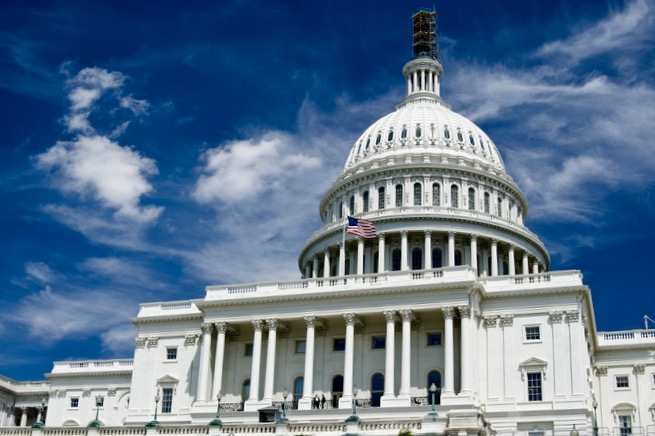The Music Modernization Act Explained: Implications for Artists & Engineers

The “Music Modernization Act” is now law. Find out the implications for musicians, producers, engineers and more.
Signed into law on October 11, 2018, the Music Modernization Act (MMA) is the biggest update to copyright legislation in the past 40 years.
Since the early 2000s, music sales have been declining, thanks first to piracy and then to streaming services like Spotify, Apple Music and Tidal. The MMA aims to address part of that problem.
Like most legislation that deals with copyright law—the MMA is rather complicated. In short, the MMA slightly increases “mechanical” royalty rates for streaming music, and aims to makes it easier to collect royalties for streaming music. It also allows “legacy artists” to earn royalties for plays on digital radio, and even allows producers and engineers to collect royalties as well.
But you’re not here for just these basics… In this article, we’re going to break down what all of that means for those of us in the music business. (You may want to bone up on the basics of copyright law and music publishing first.)
All caught up? Great—let’s start at the beginning.
The MMA is actually three bills rolled into one: the “Musical Works Modernization Act”, the “Classics Protection and Access Act”, and the “Allocation for Music Producers Act”.
Musical Works Modernization Act
The first part of the MMA is the Musical Works Modernization Act, which establishes three major provisions:
First, it creates a blanket license for interactive streaming and digital downloads of musical works. The mechanical royalty rate for this blanket license will be determined by the Copyright Royalty Board, who are required to use a “willing buyer/willing seller standard”—their best guess at a one-size-fits-all fair market value. Currently, the average payout per stream is about $0.0039.
The MMA creates what is billed as a new “transparent collection entity” called the Mechanical License Collective (MLC) to issue and administer these new licenses. The MLC is to be run by publishers and self-published songwriters.
Set to begin issuing licenses in 2021, the MLC will also be responsible for collecting, distributing and auditing royalties generated from licenses. Using its administrative fees, the MLC will create and maintain a single comprehensive public database of copyright owners—the first of its kind. Major publishers and digital service providers are also set to be be active contributors. Since the database will publicly display copyright and royalty information, publishers should be able to more easily find any unclaimed royalties.
The MMA also gives songwriters and publishers the right to audit the MLC—although they’ll be prohibited from suing streaming services for licensing violations that occurred in the past.
Unlike current PROs, the MLC is required to hold unclaimed royalties for at least three years, after which they can distribute them amongst the community of registered copyright owners, based on royalty payments made by digital music providers.
This section of the bill also aims to make various improvements to how court cases regarding royalty rates are handled. Prior to the MMA, ASCAP and BMI were each assigned a judge for life to oversee royalty disputes. Now, district court judges from the Southern District of New York will be randomly assigned to oversee these proceedings to allow for less individual bias to affect outcomes.
Classics Protection and Access Act
Originally called the Compensating Legacy Artists for Their Songs, Service, and Important Contributions to Society (CLASSICS) Act, this portion of the bill is intended to fix what’s known as the “pre-72 loophole.”
Before the MMA, songs recorded prior to 1972 were not entitled to compulsory mechanical royalties from certain uses under federal copyright law—preventing artists from collecting any statutory royalties from non-interactive digital audio transmission such as Pandora or SiriusXM radio. Rather, those licenses would be negotiated between rightsholders and those passive streaming services.
Now, any copyrighted song is subject to the same statutory license for these types of digital audio transmissions—meaning 50 percent of payments received from non-interactive digital performances will now be distributed directly to artists via SoundExchange.
Allocation for Music Producers Act
The Allocation for Music Producers (AMP) Act makes it easier for producers and engineers to collect royalties for songs they’ve worked on.
Recording artists can agree to distribute a portion of their royalties to producers and engineers by sending “letters of direction” to SoundExchange.
After receiving a letter of direction, SoundExchange will send royalty earnings directly to the assigned producers and engineers.
In special cases, SoundExchange will allocate 2% of royalties for songs created before 1995 to producers and engineers without a letter of direction.
While it may not solve every issue in the world of music publishing, what the MMA seems to be is a step forward for music creators, making the process of collecting royalties easier and more uniform than in years past.
Brad Pack is an award-winning audio engineer and writer based in Chicago, IL. He currently owns and operates Punchy Kick, a professional mixing and mastering studio that specializes in pop punk, emo, punk, grunge, and alternative music.
He has been helping artists connect with fans through emotionally resonant mixes, cohesive masters, and insightful guidance for over 10 years. Check out his website PunchyKick.com or say hi on Instagram @PunchyKick.
Please note: When you buy products through links on this page, we may earn an affiliate commission.






